Words of Wisdom - Shastra
& Shastrakaras speak
For Books and shastra downloads see Main Index, under
Books:
Om Namo Bhagavate Vasudevaya
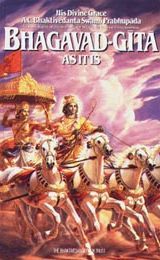

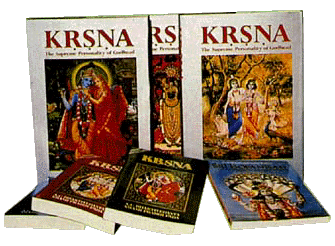
The Complete Works of Srila Prabhupada
All the books, the letters and conversations at your
fingertips
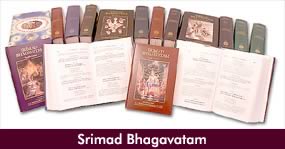

All Srila Prabhupada's books and more on one disk
http://www.vedabase.com




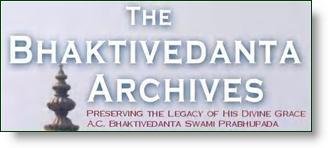
Srila Prabhupada's Audio lectures to listen to on-line:
http://www.hare-krishna.org/srila-prabhupada-lectures.htm
Listen to Srila A.C. Bhaktivedanta Swami Prabhupada on-line
- all 900 of his lectures are available HERE:
http://www.prabhupadavani.org/
Srimad Bhagavatam - the entire lecture series listen and
read along on-line - Narrated by Amala Bhakta dasa:
http://www.prabhupadavani.org/SB_index.html

The new enhanced Prabhupada MP3 series
http://www.prabhupada.com/store/store.php?page=product.php&id=MP3AUDIOLIB








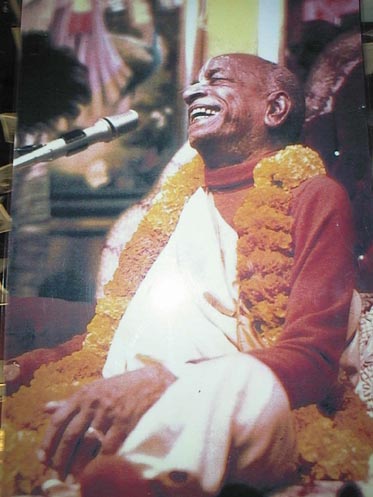
Visit "Prabhupada Connect" for all manner of Prabhupad
Nectar:
http://www.prabhupadaconnect.com/Index.html
Srila Prabhupada's Final Lesson Video - Downloadable and
viewing on-line
http://users.iskconludhiana.com/images/thumbnails.php?album=21


All Srila Prabhupada's original books
available for sale here.

Download all the Hare Krsna teachings which includes
all Vaisnava and
Vedic concepts by visiting one of the sites listed at
the following address.
http://www.geocities.com/suci123/bookdownloadsites1.html
The Bhaktivedanta Book Trust
Srila Prabhupad Memorial Library
http://www.krishna.com/main.php?id=33


33 Books Online Including Srimad Bhagavatam!
http://www.geocities.com/freeprabhupadabooks
The compressed "self extracting" file mentioned is now currently
available for download
http://www.krsnaconsciousness.org/Gauranga/Folio/BhaktivedantaVedabase_DOS.exe

Download or Listen to Prabhupad Bhajans HERE:
http://www.prabhupadavani.org/web/text/Bhajans.html


On-line 1972 McMillan edition - Bhagavad Gita As It Is:
http://www.asitis.com/

Bhagavad Gita AS IT IS on-line through the Tirupathi
Balaji site:
http://www.bhagavad-gita.us/

Bhagavad Gita Study guide on-line book:
http://chantandbehappy.com/gita/studyguide/StudyGuide-main.htm
Bhagavad Gita Study guides by numerous Iskcon devotees
- FREE downloads:
http://www.veda.harekrsna.cz/library/#3

All the Scriptures you'd ever need 4 FREE
http://www.hknet.org.nz/index-books.htm
http://www.hknet.org.nz/DDB.htm
http://www.hknet.org.nz/DDB2.html
last updated 4th August 2003


Srimad Bhagavad Gita AS
IT IS
Bhagavad Gita: Chapter
6 - Dhyana-yoga
TEXT 10
yogi yunjita satatam
atmanam rahasi sthitah
ekaki yata-cittatma
nirasir aparigrahah
WORD FOR WORD
yogi--a transcendentalist; yunjita--must concentrate in
Krsna consciousness; satatam--constantly; atmanam--himself (by body, mind
and self); rahasi--in a secluded place; sthitah--being situated; ekaki--alone;
yata-citta-atma--always careful in mind; nirasih--without being attracted
by anything else; aparigrahah--free from the feeling of possessiveness.
TRANSLATION
A transcendentalist should always engage his body, mind
and self in relationship with the Supreme; he should live alone in a secluded
place and should always carefully control his mind. He should be free from
desires and feelings of possessiveness.
PURPORT by HDG Srila A.C. Bhaktivedanta Swami Prabhupad:
Krsna is realized in different degrees as Brahman, Paramatma
and the Supreme Personality of Godhead. Krsna consciousness means, concisely,
to be always engaged in the transcendental loving service of the Lord.
But those who are attached to the impersonal Brahman or the localized Supersoul
are also partially Krsna conscious, because impersonal Brahman is the spiritual
ray of Krsna and Supersoul is the all-pervading partial expansion of Krsna.
Thus the impersonalist and the meditator are also indirectly Krsna conscious.
A directly Krsna conscious person is the topmost transcendentalist because
such a devotee knows what is meant by Brahman and Paramatma. His knowledge
of the Absolute Truth is perfect, whereas the impersonalist and the meditative
yogi are imperfectly Krsna conscious.
Nevertheless, all of these are instructed herewith to be
constantly engaged in their particular pursuits so that they may come to
the highest perfection sooner or later. The first business of a transcendentalist
is to keep the mind always on Krsna. One should always think of Krsna and
not forget Him even for a moment. Concentration of the mind on the Supreme
is called samadhi, or trance. In order to concentrate the mind, one should
always remain in seclusion and avoid disturbance by external objects. He
should be very careful to accept favorable and reject unfavorable conditions
that affect his realization. And, in perfect determination, he should not
hanker after unnecessary material things that entangle him by feelings
of possessiveness.
All these perfections and precautions are perfectly executed
when one is directly in Krsna consciousness, because direct Krsna consciousness
means self-abnegation, wherein there is very little chance for material
possessiveness. Srila Rupa Gosvami characterizes Krsna consciousness in
this way:
anasaktasya visayan
yatharham upayunjatah
nirbandhah krsna-sambandhe
yuktam vairagyam ucyate
prapancikataya buddhya
hari-sambandhi-vastunah
mumuksubhih parityago
vairagyam phalgu kathyate
"When one is not attached to anything, but at the same
time accepts everything in relation to Krsna, one is rightly situated above
possessiveness. On the other hand, one who rejects everything without knowledge
of its relationship to Krsna is not as complete in his renunciation." (Bhakti-rasamrta-sindhu
2.255-256)
A Krsna conscious person well knows that everything belongs
to Krsna, and thus he is always free from feelings of personal possession.
As such, he has no hankering for anything on his own personal account.
He knows how to accept things in favor of Krsna consciousness and how to
reject things unfavorable to Krsna consciousness. He is always aloof from
material things because he is always transcendental, and he is always alone,
having nothing to do with persons not in Krsna consciousness. Therefore
a person in Krsna consciousness is the perfect yogi.
His Divine Grace A.C. Bhaktivedanta Swami Prabhupada
Copyright 1983 The Bhaktivedanta Book Trust International. Used with
permission.

Bhagavad Gita As It Is - http://www.asitis.com/
Bhaktivedanta Vedabase - Bhagavad Gita on-line http://bhagavadgitaasitis.com/
Bhaktivedanta VedaBase: Bhagavad-gita As It Is http://vedabase.net/bg/en
Bhagavad Gita Multi Media Web-version http://chantandbehappy.com/gita/
Listen to Bhagavad Gita on line - http://www.Gitamrta.org
View our Bhagavad Gita Overview:
http://www.hknet.org.nz/BG.html
Archive: http://www.cs.rice.edu/~vivek/btg/archive/
Home Page: http://www.cs.rice.edu/~vivek/btg/
Join Bhagavad Gita eGroups HERE
mailto:bhagavad_gita-owner@egroups.com


Prabhupada Uvacha:
(here's some nectar, sometimes it comes in the form of Srutakirti prabhu's
diary, other times from Govinda dasi's diary, Hari Sauri prabhu's Transcendental
Diary, Bhurijan prabhu's book, or sometimes from a letter, or other related
source, but still nectar...)
A Mountain Surrounded by a Lake
Vijayadvaja, an American devotee serving in the
Philippines, cooked for Prabhupada both morning and noon. Each morning,
Vijayadvaja followed Prabhupada's recipe for halava: one part semolina,
two parts water, one part sugar, and one part ghee. The halava looked like
a small mountain floating in ghee. Yet Prabhupada appreciated Vijayadvaja's
cooking, especially his halava, commenting, "The quality is sufficient."
Once, however, Vijayadvaja hoped to create a large
quantity of remnants by loading up Prabhupada's lunch plate with prasadam.
Prabhupada's comment: "When my plate is so full, I lose my appetite."
To please the Lord and His devotees is the pleasure
of a devotee. Even a grain of selfishness in our attempt spoils the preparation.
- From the "My Glorious Master" by HG Bhurijana
dasa
To receive little snippets of nectar like this on a daily basis subscribe
HERE: or If you want to introduce anyone else in reading Srila Prabhupada
Nectars, please send their eMail addresses to mailto:krpamaya_gauranga@hotmail.com
Please Chant:
 Hare
Krishna Hare Krishna Krishna Krishna Hare Hare
Hare
Krishna Hare Krishna Krishna Krishna Hare Hare
 Hare
Rama Hare Rama Rama Rama Hare Hare
Hare
Rama Hare Rama Rama Rama Hare Hare
...................and be Happy

Listen to Srila Prabhupad on-line
....a different lecture, morning walk, conversation or
class daily.
"Varieties Of Sacrifice"
>>> Ref. VedaBase => Bhagavad-gita 4.20-24 -- New York, August 9, 1966
Listen to the entire lecture on-line:
http://prabhupadaradio.com/M3U/Gita/m3u/GT165.m3u
Prabhupada: One two three, (tap, tap, tap) one two three,
one two three. Testing, one two three. [break]
yasya sarve samarambhah
kama-sankalpa-varjitah
jnanagni-dagdha-karmanam
tam ahuh panditam budhah
We have been discussing this sloka since the last two
days in our meetings. The next verse is
tyaktva karma-phalasangam
nitya-trpto nirasrayah
karmany abhipravrtto 'pi
naiva kincit karoti sah
In order to be free from the reaction of our work, this
formula is described by Sri Krsna.
yadrccha-labha-santusto
dvandvatito vimatsarah
samah siddhav asiddhau ca
krtvapi na nibadhyate
gata-sangasya muktasya
jnanavasthita-cetasah
yajnayacaratah karma
samagram praviliyate
The formula is that we have to become detached from the
result of the work and must be situated in full knowledge, in full knowledge.
Unless we are situated in full knowledge, it is not possible to be detached
from the work which you are doing. And that detachment and that knowledge,
to be situated in full knowledge, is possible when we perform yajna or
sacrifice.
Now, today's subject matter is varieties of sacrifices,
how we can perform different kinds of sacrifices. And what is the sacrifice?
Sacrifice means yajnarthe karma. Just at the present moment our conception
is that I am the proprietor of everything. Actually, I am not the proprietor.
The Isopanisad says that isavasyam idam sarvam: "The Supreme Lord, Personality
of Godhead, or Krsna, He is the proprietor." But deluded by the illusory
energy of the material existence, we are thinking that "I am the proprietor."
Therefore in the scriptures, in Vedic scriptures, sacrifice is recommended.
Sacrifice means you give voluntarily. You give voluntarily. Because we
have been so much attached to this material proprietorship, that... And
without that attachment, there is no possibility of our becoming free from
this material entanglement. But that attachment is very difficult to give
up. Therefore sacrifice has been recommended, that "You sacrifice."
Supposing that it is your proprietorship, you are the
proprietor of everything, but you sacrifice, yajnarthe. Yajnarthe means
"for the Supreme Lord." So so many sacrifices are recommended in various
scriptures. So we shall try to discuss some of the sacrifices. Yajnayacaratah
karma samagram praviliyate. If we perform our duties, yajna, for the matter
of satisfaction of Visnu, the Supreme Lord, then we shall not be bound
up by the reaction of any work.
Now, the first thing is in the sacrifice according to
the Vedic rites, there are five principle factors. What are those? There
is sacrificial fire, altar, and the person who is offering the... Generally,
in the sacrifice grains and butter, clarified butter, is offered. So the
sacrificial altar, fire, and the offering ingredients, grains and clarified
butter, and the person who is offering sacrifice, three, and the result
and the performer. These five things are there in the matter of sacrifice.
continued.......................
Listen to the entire lecture on-line:
http://prabhupadaradio.com/M3U/Gita/m3u/GT165.m3u
or receive in mailbox and Subscribe HERE:
mailto:lectures-subscribe@prabhupadavani.org
Sravanam kirtanam at:
http://www.PrabhupadaVani.org
© 2001 The Bhaktivedanta Book Trust International. Used with permission.

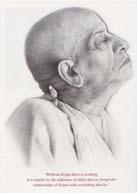
SRILA PRABHUPADA'S QUOTE OF THE DAY
"So our program if it is kept pure according to
my many instructions, will give you the deserved reputation of being the
topmost members of the society. That is very much wanted so that we may
hope to change the society as a whole."
- Letter to Jagadish das - 17 November, 1970
Sign-up to receive these quote HERE:
mailto:haribol@pacific.net.sg

Bhaktivedanta Vedabase Network ...
http://vedabase.net/


The Scientific - Mathematical
Proof for God's existence:
http://geocities.com/sector114

http://robot-hosting.com/php/login_nicholas.html
user name = guest
password = guest
(Collection of philosophical and mathematical proofs
for existence of God can be found in this site.)

Scientifically Philosophical Books for the layman
 ...
... ...
...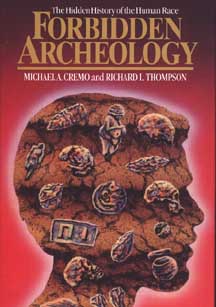 ...
...
Click on any of these books to read more about them and where to get
a copy
or contact your local temple for purchases
sample of Life
comes from Life HERE.pdf

Lotus Imprints - Preserving Prabhupada's Legacy - The
Publishing House of Hari Sauri dasa
http://www.lotusimprints.com/

Quotes from Shastra - scriptures
View using Balaram font
The Advent of Bhagavad Gita

This is the annirversary day commemorating
the day that Srimad Bhagavad Gita was spoken by Lord Sri Krishna to His
dearmost devotee Arjuna at the place now known as Jyotisar Tirtha amid
the waring families of the Kurus and the Pandavas at Kurukshetra. If one
wishes one can still go and visit that place and see the monument erected
there with Krishna as Parthasarati (the chariot driver) and Arjuna the
warrior on their chariot. It is claimed by the ashram who maintain the
shrine that the tree that is next to Them is a continum growth of the original
tree witness that was there at the actual day of speaking.
Traditionally devotees come to Kurukshetra
(Dharmakshetra) and recite Bhagavad Gita from early morning until the next
morning, perform arati to Bhagavad Gita and to Krishna and Arjuna upon
the chariot, offer lamps 'deep daan' at Brahma Sarovar, shloka recitals,
shobha yatras and seminars on the significance of the Gita today.
Devotees who cannot get to Jyotisar Tirtha remember the
blessed event by reciting Bhagavad Gita, performing Bhagavad Gita ahuti
of each verse or selected chapters into the sacred fire, and discussing
the subject matter of Bhagavad Gita in the association of devotees. Distribution
of Bhagavad Gitas' on this day is also a very auspicious activity to perform.
Remembering the Scene:
The Pandavas army took the western side of the battlefield
of Kurukshetra. They were facing the east. Their army was stationed near
a lake. A white royal umbrella was seen in the Kauravas army. The soldiers
started warning up at the thought of the battle ahead. Blowing of conches
raised a great tumult and beating of drums and many other instruments were
sounded to announce the readiness for the war. Excitement was building
up.
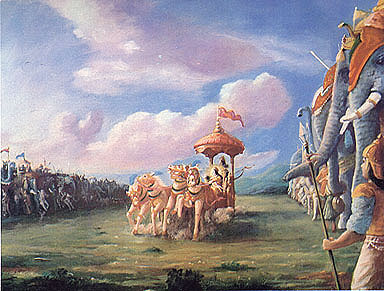
The warriors of both the sides met and settled the rules
of the war. Only equals will fight in personal duels. Those who surrender,
there lives will be spared, No charioteer, animal, or servants who were
not soldiers were to be attacked. These and some other rules that were
usual in a Dharma-Yuddha or a righteous war were finalised and both the
sides agreed to abide by them.

On the eve of the war, sage Vyasa visited the palace of
Dhritarastra, who was his son, now the terrible days are in store. All
your sons and the kings will be killed soon. This is settled by fate. It
is ordained so, do not be sorry. I shall grant you your eyesight so that
you may witness the war. Dhritarastra was shaken by the stark words of
the sage. He said, ‘My lord, I have been blind all my life. I do not want
to see my sons dying in the battlefield. If someone can give me an account
of the war as it unfolds, I shall be happy. Vyasa said, Sanjaya would get
the power to see everything that happens in the war. He will be able to
see during the day as well as in the night. He shall be even able to know
the thoughts of the persons engaged in the war. He shall not be tired or
exhausted. The omens are all against the Kauravas." Saying this the great
sage departed.
(After this the entire account of the war is as related
by Sanjaya to the blind king Dhritarastra)
Duryodhana was busy arranging his troops in a battle array.
He told Dussashan, ‘take care to protect our grandsire, Bhishma. All the
chariots and warriors should be placed in such a position to Bhishma. He
alone is capable of destroying the entire army of the Pandavas led by Dhristadhyumna.
We should pay special attentions to kill Shikhandi. He could be a source
of danger to Bhishma.
Then (one Akshauhini of Army comprises of 21870 chariots,
21870 elephants, 65610 horses and 109350 men.) akshauhinis of the Kauravas
army was arranged in Vyuha (battle array) and one akshauhini was under
the direct control of Bhishma. Bhishma chariot was white-silver coloured,
it was driven by white horses and his flag was golden, bearing his personal
insignia. The Sun was rising in a golden dawn. Bhishma spoke to his soldiers,
"Today is a very auspicious day. The gates of heavens are open to all the
Kshatriyas who will be fortunate to die in the battle. It is not beckoning
of a Kshatriya to die in bed or of sickness. Battlefield is the only glorious
place to die. Without thinking about tomorrow do your best to win the war.
Karna was the only warrior who had not joined the war. Bhishma chief body
guard was Ashwathama, who was supported by seven more warriors. Salya and
Bhurishrava were among them. Duryodhana’s banner was proudly fixed a top
his chariot.
Looking at the vast army of the Kauravas, Yudhisthira
said to Arjuna. Their army is so huge. They have eleven akshauhinis against
them we have only seven. How best can be arrange our army in battle formation.
Bhishma is quite formidable. Arjuna said, that he would arrange the army
in a ‘Vyuha’ named ‘Vajra’. This was the favourite arrangement of lord
Indra. Dhristadhyumna was in the centre of the army. Bhima, Yudhisthira,
protected him and Arjuna supported Shikhandi. The most prominent banner
in the Pandava side was that of Arjuna, having lord Hanumana himself on
it, driven by Krishna, having white horses. All those who knew the reality,
saluted Krishna. Krishna said to Arjuna, ‘See the army of the Kauravas,
led by your old grandsire. The lion among the Kaurava heroes, is your first
victim.
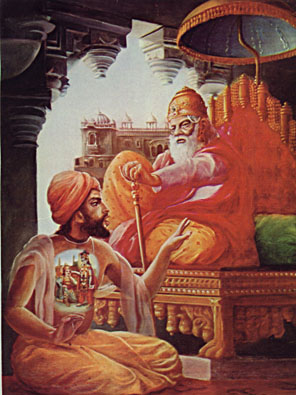

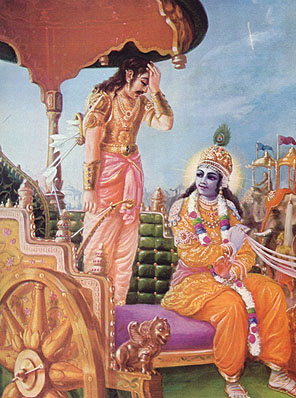

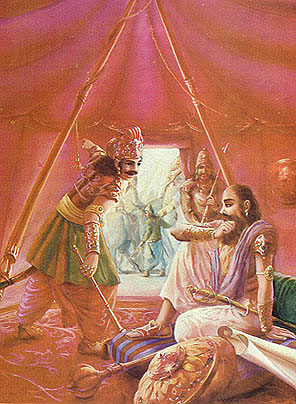
courtesy BBT Int.

This is the anniversary day commemorating
the day that Srimad Bhagavad Gita was spoken by Lord Sri Krishna to His
dearmost devotee Arjuna at the place now known as Jyotisar Tirtha amid
the waring families of the Kurus and the Pandavas at Kurukshetra. If one
wishes one can still go and visit that place and see the monument erected
there with Krishna as Parthasarati (the chariot driver) and Arjuna the
warrior on their chariot. It is claimed by the ashram who maintain the
shrine that the tree that is next to Them is a continum growth of the original
tree witness that was there at the actual day of speaking.
Traditionally devotees come to Kurukshetra (Dharmakshetra)
and recite Bhagavad Gita from early morning until the next morning, perform
arati to Bhagavad Gita and to Krishna and Arjuna upon the chariot, offer
lamps 'deep daan' at Brahma Sarovar, shloka recitals, shobha yatras and
seminars on the significance of the Gita today.
Devotees who cannot get to Jyotisar Tirtha remember the
blessed event by reciting Bhagavad Gita, performing Bhagavad Gita ahuti
of each verse or selected chapters into the sacred fire, and discussing
the subject matter of Bhagavad Gita in the association of devotees. Distribution
of Bhagavad Gitas' on this day is also a very auspicious activity to perform.
What is the Bhagavad Gita?
The Bhagavad Gita(BG) was spoken by Sri Krishna to His
friend and disciple, Arjuna at the beginning of the epic war, Mahabharata.
BG provides the concise conclusion of the millions of verses in all the
Vedic scriptures. In just eighteen chapters containing seven hundred verse,
Sri Krishna answers all questions about the duty of the living entity.
In glorifying the BG, Lord Shiva says in the Gita Mahatmya (Padma Purana)
that it is sufficient to lead one to liberation.
How should one read the BG?
The BG should be studied in the same mood as it was heard
by Arjuna. Sri Krishna declares that He is revealing this most confidential
knowledge to Arjuna because is not envious and He is a friend. So one must
read and understand the BG in the mood of at least theoretically accepting
the position of Krishna as God. This knowledge is never revealed to one
who reads it in a challenging and speculative mood.
Owing to the universal message in the BG, many people
take to it instinctively. Unfortunately its importance has also given rise
to many people speculating and misinterpreting it. In order to protect
the trusting people from this kind of cheating, Sri Krishna stresses the
importance of Paramapara (disciplic succession) and Guru (spiritual master)
in receiving the knowledge of the BG.
Who should read the BG?
The BG is often referred to as the "Handbook for humanity".
Never in the BG has Sri Krishna restricted the scope of the BG to Hindus
or Indians. It is completely non-denominational, meant for any one inquiring
about his reason for existence. Indeed many people following Christianity
or Islam get a much better perspective of their own religion after reading
the BG and are able t o follow their religions with greater conviction.
What is Purpose of the BG?
The BG was spoken to guide the conditioned soul on the
path of the spiritual advancement. It is presented as principle and details.
The dominating principle of the BG is to develop God consciousness. In
the details, Sri Krishna explains three primary ways of doing this and
then further expands on these paths. He then relates them to each other
and brings forth the single most effective path for returning back to God
What are the three paths?
These paths are explained as yoga. The Sanskrit word
"yoga" means connecting to the absolute, and it is in this context that
the word yoga is used in the BG.
The three paths given by Sri Krishna are Karma yoga, Jnana
yoga and Bhakti yoga. The first six chapters primarily discuss Karma yoga,
liberation by performing prescribed activities. The last six chapters primarily
talk about Jnana yoga, liberation by worshipping the Lord through one's
intelligence. Ensconced between these two "protective" covers, like a pearl
in the oyster, in the middle six chapters, Krishna reveals the most confidential
of all knowledge, Bhakti yoga, the path of pure, unalloyed devotional service.
He declares this to be the highest, the easiest and the fastest path to
Him, and for one who is fortunate to embark on it, the binding illusions
of Maya are dispelled in no time.
What is Karma yoga?
A person situated in Karma yoga executes one's prescribed
duties. These duties are as prescribed by the Varnashrama system created
By Krishna through the Vedas. According to one's ability and inclination,
a person may acquires a particular varna. He may become a Brahaman (teacher,
guide), Ksatriya (administrator, warrior), Vaishya (merchant, farmer) or
Sudra (worker). According to his situation he lives in one of the four
ashrams: Brahamacari (student), Grahastha (married), Vanaprastha (retired)
and Sannyasa (detached). The eight fold Varnashram system is created to
allow one to be aware of his prescribed duties and execute them properly.
It is important to note here is that the BG stresses that a varna is acquired
by one's ability and inclination, never by birth. So in the BG, there is
no support of the "caste-system" prevalent in India. The Varnashram system
appears naturally in all societies over the world.
Performing prescribed duties will earn a person much pious
credit, but it will also continue to bind him to the material world. So
Karma can be "sakarma" (done in anticipation of enjoying its fruits) or
"nishkarma" (detached from the results). In both cases a person is attached
to performing the activity. However, when a person performs activities
only for the pleasure of the Lord, he has reached the stage of Bhakti.
For instance Sadhna (japa, arati, kirtan) are activities performed with
no material motives, simply to glorify or remember the Lord. Thus Karma
yoga can be used to elevate one self to the position of Bhakti yoga by
first performing prescribed activities, then renouncing the fruits of the
activities to Krishna and finally by renouncing the activity in itself
to Krishna.
What is Bhakti yoga?
The path of devotion is described as the most confidential
path back to Godhead. It is described as the "elevator" approach to Krishna
as opposed to all the other "staircase" paths. The essence of the Bhakti
yoga is summarized by Sri Krishna in Chapter 9, Verse 34, as follows: "Engage
your mind always in thinking of Me, become My devotee, offer obeisances
to Me and worship Me. Being completely absorbed in Me, surely you will
come to Me."
This verse, often considered to be the summary verse of
the entire BG, contains the essence of the existence of a spirit soul.
In the material world, trapped in the illusory sense of identifying with
the body and its extensions, a spirit soul remains forever bewildered by
the duality of existence. However by simply surrendering to Krishna, understanding
Him to be the original, primeval cause of all causes and thus worshipping
Him without any desires of material benefit, one can easily go back to
Him.
Bhakti yoga does not mean inactivity. Indeed a bhakta
is most active, for he sees all his activities now in relation to the Supreme.
But he is detached from the activity and the fruits of the activity, neither
happy in success nor distressed in failure, understanding that all this
is ultimately for Krishna and coming from Him only.
What is Jnana yoga?
In the Jnana section Krishna elaborates about the five
factors of existence: Isavara (God), Jivatma (Soul), Kala (Time), Karma
(actions) and Prakriti (Nature). He explains that while Kala, Prakriti,
Jiva and Isavara are eternal, Karama is not. As long as one is involved
in fruitive activities, the cycle of Karma, performed in one of the three
modes of material Nature (goodness, passion, ignorance) is binding. For
every action, good or bad, there is a reaction. This cycle can only be
broken by performing devotional service, since that does not have any reactions,
good or bad. In this stage the person transcends the material plane of
existence and enters into the spiritual realm.
When Krishna explains the path of spiritual advancement
by knowledge, Arjuna gets confused between the Karma (action) and Jnana
(inaction). Krishna explains that one must strive for activities performed
in knowledge of Him, which will ultimately lead to Bhakti. Philosophy without
faith is speculation, and faith without philosophy is rituals. The two
must complement each other. Thus, Krishna once again stresses that the
ultimate goal of all transcendentalists is Him. They may reach Him directly
by Bhakti or first reach Bhakti through Karma or Jnana.
Why has Krishna given alternatives?
A confusing aspect of the BG is the fact that while acknowledging
the superiority of Bhakti yoga. Krishna spends considerable time talking
about Jnana and Karma yoga. He even speaks briefly about the eight fold
astanga yoga process followed by the mystics. For many people this is very
confusing if not apparently contradictory.
In reality. Krishna is offering some thing for every one
according to their levels of advancement and inclination. As God, He does
not interfere with the free will of a living entity. But as the most compassionate
well wisher He wants every one to leave this material world of misery and
return to the original spiritual abode.
So, for a person attracted to action, there is Karma yoga.
For the intellectual there is Jnana yoga. For the mystic there is astanga
yoga. The BG meets the person at the level they are in and gradually
elevates them to the platform where they become qualified to execute Bhakti
yoga, pure devotional service. A very few fortunate souls, by the causeless
mercy of Krishna and His devotees, are able to take directly to Bhakti,
and for them the way back to Godhead is quick and easy.
Conclusion
We hope that these points address your interests and
motivate you to read the Bhagavad Gita As It Is.
Read Bhagavad Gita On-line HERE: http://www.asitis.com/

Bhagavad Gita Pictures - Copyright ©2005 The Bhaktivedanta Book
Trust
International, on the web at http://www.krishna.com.
Used with permission.

The following Sections are from Sri Gaudiya Kantahara
14.74
"yasyaite'ñöha catväriàçat
saàskäräù sa brähmaëaù"
One who has performed the forty-eight
kinds of saàskäras is a brähmaëa.
1. garbhädhäna impregnation
2. puàsavana causing the
birth of a male child
3. sémantonnayana parting
of the hair
4. jäta-karma the duties after
the birth of a child
5. näma-karaåa naming
ceremony
6. niñkramaëa taking
the child out of the room for the first time
7. anna-präçäna
eating grains
8. karaåavedha piercing ears
9. caudakarma shaving the head
10. upanayana sacred thread
11. samävartane completing
education
12. viväha marriage
13. antyeñöi funeral
14. deva yajïa sacrifice to
the gods
15. pitå yajïa sacrifice
to manes
16. bhuta yajïa sacrifice to
living beings.
17. nara yajïa sacrifice to
human beings
18. atithi yajïa treating the
guests
19-41. deva-vrata catuïöhaya,
aïöhakä-çräddha, pàrvaåa-çräddha,
çrävané, ägräyaåé, prauïöhapadé,
caitra, càturmäsya, niruòa paçubandha, sauträmaåi,
agniïöhoma, atyagniïöhoma, uktha, ïoòaïé,
väjpeya, atirätra, äptoryäma, räjasüyä
names of various sacrifices
42-45. agnyädheyam, agnihotram,
darça-paurëamasya, agrayäåeïöi.
46. çauca cleanliness
47. anäyasa-maìgaläcära
The auspicious acts done without endeavor.
48. akärpaåya aspåhä
freedom from miserliness and desire. (Mahäbhärata, Çänti
Parva 189.2)
The One Branch and the Many Branches
14.75
yad apy uktaà garbhädhänädi-dähänta-saàskäräntara-sevanäd
bhägavatä näma-brähmaëyam-itiù taträpy-ajïänam-eväparädhyati,
na punaräyusmato doñaù; yadete vaàça-paramparayä
bäjasaneya-çäkhä-madhéyänäù
kätyäyanädi-gåhyokta-märgeëa garbhädhänädi-saàskärän
kurvate, ye punaù särvatranuvacana-prabhåti trayé-dharma-tyägena
ekäyana-çruti-vihitäneva catväriàçat
saàskärän kurvate te'pi svaçäkhä gåhyoktam-arthaà
yathädanutiñöhamänäù na çäkhäntaréya-karmänuñöhänäd-båähmaëyät
pracyavante, anyeñämapi paraçäkhä-vihita-karmän-anuñöhäna-nimittä-brähmaëya-prasaëgät.
[In the Ägama-Prämäëya,
Yämunäcärya establishes the Prämäëya, or
authority, of the Païcarätrika scriptures (ägama, tantra,
çästra) in defense against the community of smärta brähmaëas
who were at the time challenging the authority of the Païcaratra traditions
as being non-Vedic. Because Yämunäcärya's credibility as
a Vedic brähmaëa could not be challenged, he was in a strong
position to mount a defense of Païcarätrika traditions.
According to Yämunäcärya,
the class of qualified brähmaëas included those Deity worshipers
who were not professional, but who worshiped only for their own benefit
and the benefit of others, and who performed forty saàskäras
or purificatory practices based on the ancient Väjasaneya or Çukla
Yajur Veda as an alternative to the traditional Vedic practices. The ritualistic
priests, or smärta-brähmaëas, who were Yämunäcärya's
enemies claimed that the practice of these alternate saàskäras
were non-Vedic, and therefore unholy. They accused Yämunäcärya
of deceit by trying to base the system of saàskäras on the
lost Vedic scriptures. The äcärya's arguments on this point were
difficult for the smärtas to defeat, however, since the practice of
referring to lost Vedic scriptures was invented by the smärtas themselves
to justify their own non-Vedic practices and give them a "Vedic" basis.
Even the strictest smärta brähmaëa has to admit that there
are injunctions and rituals in the dharma-çästras for which
there are no known Vedic injuctions, but for which a Vedic basis must be
presumed.
In light of this, smärta
brähmaëas have often appealed to the lost Vedic scriptures (such
as the single original Veda which Vyäsadeva divided into three parts)
in order to justify the practices and rules of corollary Vedic literatures
such as the Manu-saàhitä, which forms much of the basis for
smärta ritual. While the smärtas attempt to discredit the idea
that their own arguments can be used against them to establish Vedic support
for Païcarätrika practice, Yämunäcärya's arguments
cannot be defeated without also destroying the basis for smärta ritual.
Yämunäcärya
says: It has been said that the Bhägavatas are polluted, because they
have given up the Vedic saàskäras, and have accepted an alternative
system of purifactory rituals, beginning with the garbhädhäna-saàskära
and ending with the funeral ceremony. My opponents have argued that the
verdict of the scripture concerning offenders is clear on this point. In
answer to this, I must say, in the words of Ayuïmän, that there
is no fault in my opponents; the only fault is with their ignorance, because
the forty purificatory rituals of saàskäras practiced by the
Bhägavatas have descended from the "one Veda," the Ekäyana Çäkha,
or the "one branch" of the Çukla Yajur Veda, beginning with the
Kätyäyana, which includes scriptural injuctions about the prescribed
religious ceremonies to be performed at birth, marriage, and so on.
This process has descended
through an ancient and unbroken family tradition in different brahminical
families who for many generations have followed all these purifcatory practices,
beginning with the garbhädhäna and other saàskäras.
In fact, those who perform these forty saàskäras cannot be
considered unbrahminical for failing to follow the saàskäras
as they are mentioned in the three Vedas. They do not fall from brahminical
status simply for favoring the ancient and more traditional saàskäras
mentioned in the One Veda (Ekäyana-çruti) over those recommended
in the three Vedas. These devotee brähmaëas are simply
following carefully the ancient tradition of the one Veda and cannot be
faulted for not following another branch of the Vedas. If it were the case
that a brähmaëa who follows the rules of one branch of the Vedas
is not "Vedic" and loses his caste for not following the rules of another
branch of the Vedas, then all brähmaëas would lose their caste,
because different systems of rules governing rituals are found in differenct
parts of the Vedas. (And it is not possible to follow all of them, since
by following the rules of one system one will violate the rules of other
systems). (Çré Yämunäcärya, Ägama-prämäëa)
Vaiñëavas are not Çüdras
14.76
na çüdrä bhagavad-bhaktäste
tu bhägavatä matäù
sarva-varëeñu te çüdrä
ye na bhaktä janärdane
One who is a paragon of devotion
to the Supreme Personality of Godhead can never be called a çüdra;
rather he is glorified as a Bhägavata, or one who is connected with
Bhagavän. On the other hand, those who are antagonistic to bhakti
are considered to be çüdras, no matter what caste they are
born in. (Hari-bhakti-viläsa, 10.165)
Except for Paramahaàsas,
Devotees Worship
in Varëäçrama and
Accept the Sacred Thread
14.77
bahiù sütram tyajed-vidvän
yogam uttamam ästhitaù
brahma-bhäva-mayaà sütraà
dhärayed yaù sa cetanaù
Established in the state of
the highest yoga, the wise should reject the external sacred thread. One
who is really self-conscious must put on the thread constituted by awareness
of spiritual reality. (Brahmopaniñad 28)
The Sacred Thread Worn by Those who
are Brähmaëas
in Name Only is the Ugly Conceit
of the Proud
14.78
brahma-tattvaà na jänäti
brahma-sütreëa gärvitaù
tenaiva sa ca päpena vipraù
paçurudähåtaù
A so-called brähmaëa
who has no spiritual knowledge, but who, out of pride, wears the thread
of a brähmaëa is certainly only a sinful impostor who is no better
than a two-legged animal. (Atri Saàhitä 372)
Real Brähmaëas
14.79
yathä käñöhamayo
hasté yathä carma-mayo mågaù
yaç ca vipro'nadhéyänas
trayaste näma vibhrati
Just as an elephant made of
wood is an elephant in name only, and a deer made of leather is a deer
in name only, similarly a brähmaëa who is devoid of Vedic knowlege
is a brähmaëa in name only. (Manu-saàhitä 2.157)
Giving the Sacred Thread to Those
not on the
Vedic Path is Forbidden
14.80
yo'nadhétya dvijo vedam anyatra
kurute çramam
sa jévan eva çüdratvam
äçu gaccati säëvayaù
A brähmaëa who without
studying the Vedas who labors for other things material wealth, position,
adoration, and other opulences, becomes çüdra along with all
his family members. (Manu-saàhitä 2.168)
14.81 - 84
vipraù saàskära-yukto
na nityaà sandhyädi-karma yaù
naimitikastu no kuryät brähmaëa-bruva
ucyate
yuktaù syät sarva-saàskärair-dvijastu
niyama-vrataiù
karma kiïcit na kurute vedoktaà
brähmaëa bruvaù garbhädhänädibhir yuktas
tathopanayanena ca
na karma-kåt na cädhéte
sa jïeyo brähmaëa-bruvaù
adhyäpayati no çiñyän
nädhéte vedam uttamam
garbhädhänädi-saàskärair
yutaù syäd brähmaëa-bruvaù
A"brähmaëa" who
has failed to perform any of the ten kinds of saàskäras, who
fails to regularly perform the duties of a brähmaëa, beginning
with sandhya, vandya, etc., is a brähmaëa in name only (brähmaëa-bruva).
Such a "brähmaëa" fails to follow any rules or vows, nor does
he perform the ceremonial purificatory rituals mentioned in the Vedas.
He has not been properly purified either by garbadhäna-saàskära
or by the sacred thread ceremony, and neither does he study the Vedas.
Such a worthless, so-called brähmaëa does not study the best
of Vedic scriptures, nor does he teach them to his so-called disciples.
(Padma Puräëa)
14.85
kulluka-bhaööa-öékä
yo brähmaëaù kriyä-rahita
ätmänaà brähmaëaà
bravéti, sa brähmaëa-bruvaù
According to the commentary
of Kulluka Bhaööa, one who is devoid of proper behavior of a
brähmaëa, and yet represents himself as a brähmaëa
is a brähmaëa in name only. (Manu-saàhitä 7.58)
14.86
atapäs-tvanadhéyänaù
pratigraha-rucir-dvijaù
ambhasy-açma-plavenaiva saha
tenaiva majjati
A brähmaëa devoid
of austerity, who has not studied the Vedas, and yet accepts charity as
a brähmaëa is condemned. Such brähmaëas are like a
stone raft both themsleves and those who give them charity are doomed to
go down in the ocean of hellish material existence. (Manu-saàhitä
4.190)
The Consequences for the Brähmaëas
in Name Only
14.87
aliìgo liìgiveñeëa
yo-våttim-upajévati
sa liìginäà haratyenas-tiryag
yonau cajäyate
When one unfit to wear the
sacred thread of a brähmaëa wears it and earns his livelihood
through sinful and unholy behaviour, such a person incurs sin and takes
birth in sub-human wombs. (Manu-saàhitä 4.200)
Students and Pracitioners of Professional
Brahmanism are Condemned
14.88
bhåtak-ädhyäpako
yaç ca bhåtak-ädhyäpitas-tathä
çüdra-çiñyo
guruç caiva väg duñöaù kuëòa-golokau
One who teaches the Vedas
by accepting salary, one who studies by giving salary, disciple of a çüdra,
guru of a çüdra, one who speaks nonsense and bastards should
be avoided. (Manu-saàhitä 3.156)
Demigod Worship and Other Unbrahminical
Activities
14.89
api cäcäratas-teñäm
abrahmaëyaà pratéyate
våttito devatä-püjä-dékñä-naivedya-bhakñaëam
garbhädhänädi-dähänta-saàskäräntara-sevanam
çrautakriyä' nanuñöhänaà
dvijaiù sambandha-varjanam
ity-ädibhiranäcärair-abrahmanyaà
sunirëayam
Professional temple priests,
who perform ritual worship of demigods in order to maintain their livelihood
and who accept non-Vedic tantric initiations to do so find that their püjä,
their dékñä, their sacrificial offerings, and their
offerings of foodstuffs are all unclean and unbrahminical. The results
of their so-called saàskäras, beginning with the garbhädhäna-saàskära,
are burned to ashes. In order to correct themselves they must again undergo
all the saàskäras mentioned in the scriptures. Their study
of the çruti is without any positon; having given up their connection
with the genuine communtiy of twice-born brähmaëas, their worship
is void and unbrahminical, and their association is polluting to true brähmaëas.
(Çré Yämunäcärya, Ägama Prämäëya,
discussion of Sätvata Çästra)
Demigod Worship by Brähmaëas
is Condemned
14.90
devakoçopajévé
yaù sa devalaka ucyate
våttyarthaà püjayed-devaà
tréëi varñäëi yo dvijaù
sa vai devaloko näma sarva-karmasu
garhitaù
One who worships the demigods
in order to increase his material wealth is called a "devala." Any brähmaëa
who worships the demigods for three years is considered to be a devala.
All his work is condemned from beginning to end. (Çré Yämunäcärya,
Ägama Prämäëya)
14.91
eñäà vaàçakramä
deva devärcä våttito bhavet
teñäm adhyayane yajïe
yäjane nästi yogyatä
Whoever worships the demigods
on the basis of his family tradition his study of the Vedas, his yajïa,
and his worship have no connection with proper brahminical conduct. (Çré
Yämunäcärya, Ägama Prämäëya)
Demigod Worship is Damned
14.92
äpadyapi ca kañöhäyäà
bhéto va durgato'pi vä
püjayenaiva våttyartaà
deva-devaà kadäcana
One should not engage in demigod
worship, in which one must suffer pain, trouble, fear, danger, and difficulty.
(Çré Yämunäcärya, Ägama Prämäëya)
taken from Gaudiya Kantahara Fourteenth Jewel Varnasharamdharma-tattwa

All pictures from Srimad Bhagavatam and Iskcon works - Copyright ©2005
The Bhaktivedanta Book Trust
International, on the web at .http://www.krishna.com/.
Used with permission.









![]()
![]()
![]()

![]()
![]()
![]()
![]()

![]()
![]()
![]()
![]()




















